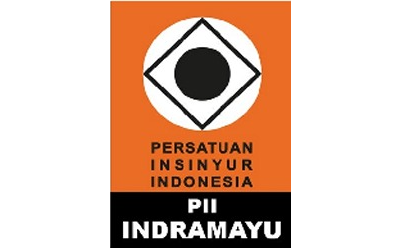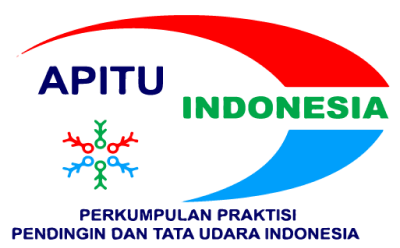PENGARUH KOMPOSISI DAN WAKTU FERMENTASI CAMPURAN LIMBAH INDUSTRI TAHU DAN KOTORAN SAPI TERHADAP KANDUNGAN GAS METHANE PADA PEMBANGKIT BIOGAS
Abstract
Full Text:
PDFReferences
Coniwanti. P, Herlanto. A, dan Y Anggraini. I, (2009), Pembuatan Bigas Dari Ampas Tahu, Jurnal Teknik Kimia: No.1 Vol. 16.
Direktorat Jendreral Peternakan Dan Kesehatan Hewan Kementerian Pertanian. (2017). “Statistik Peternakan dan Kesehatan Hewan (Livestock and Animal Health Statistic 2017)”. Jakarta. Direktorat Jenderal Peternakan dan Kesehatan Hewan Kementerian Pertanian RI.
ENVE 737, 2014. “Biogas Purification and Utilization : Anaerobic Biotechnology for Bio-Energy Production. http://mebig.marmara.edu.tr/Enve737/Chapter4-Bogas.pdf (Di akses pada 3 Februari 2014).
Fang, C., (2010). “Biogas Production from Food-processing Industrial Wastes by Anaerobic Digestion”. Thesis PhD, Technical University of Denmark.
Ghatak, M.D., and Mahanta, P, 2016. “Biogas Purification Using Chemichal Absorption”. International Journal of Engineering and Technology, Vol 8, No 3. ISSN : 2319-8613.
Hamidi, N., Wardana, I., dan Widyaningrum 2011. “Peningkatan Kualitas Bahan Bakar Biogas Melalui Proses Pemurnian Dengan Zeolit Alam”. Jurnal Rekayasa Mesin, Vol. 2, No.3.
Huertas, J.I., Giraldo, N., Izquierdo, S, 2011. “Removal of H2S and CO2 from biogas by amine absorption. Mass Transfer in Chemical Engineering Processes”, vol 307, INTECH Open Access Publisher, Rijeka.
I.J. Dioha dkk, 2013. “Effect of Carbon to Nitrogen Ratio on Biogas Production”. International Research Journal of Natural Sciences, Vol. 1, No. 3.
Kemenperin. “Kementerian Perindustrian (2016) Perkembangan Jumlah Unit Usaha Industri Besar dan Sedang Indonesia”. http//kemenperin.go.id/statistik/ibs_indikator.php?indikator=1 (Diakses 14 Oktober 2018).
Kulkarni, M.B., Ghanegaonkar, P.M, 2019. “Hidrogen Sulfide Removal from Biogas Using Chemical Absorption Technique in Packed Column Reactors”. Global Journal of Environmental Science and Management. 5(1):155-166, Winter.
Maile, I., and Muzenda, E, 2014. “A Review of Biogas Purification Through chemical Absorption”. International Conferrenc.on Chemical Engineering & Advanced Computational Technologies. Pretoria, 24-25.
Mara, I.M, 2012. “Analisis Penyerapan Gas Karbondioksida (CO2) Dengan Larutan NaOH Terhadap Kualitas Biogas Kotoran Sapi”. Jurnal Dinamika Teknik Mesin, Vol. 2, No. 1.
Mujdalipah, S., Dohong, S., Suryani, A., dan Fitria, A, 2014. “Pengaruh Waktu fermentasi Terhadap Produksi Biogas Menggunakan Digester Dua Tahap Pada berbagai Konsentrasi palm Oil-Mil Efluent dan Lumpur Aktif”gvfffffgvv. Jurnal Agritech, Vol. 34, No. 1.
Pratiwi, A.A, (2107). “Pengaruh Variasi Pengadukan Terhadap Volume Biogas Dari Kotoran Sapi Dengan Penambahan Bonggol Pisang”. Tugas Akhir Skripsi, Universitas Muhammadiyah Surakarta.
Ramdiana, (2017). “Pengaruh Variasi Komposisi Pada Campuran Limbah Cair Aren dan Kotoran Sapi Terhadap Produksi Biogas”.Jurnal Eksergi, Vol. 14, No. 2.
Shah, D., Nagarseth, H, 2015. Low-Cost Biogas “Purification System for Bio CNG as Fuel for Automobile Engine”s. International Journal of Innovative Science., Engineering & Technology, 2(6): 308-312 (5 pages)
Shah, D.R., Nagarsheth, H.J., and Pradeep, A, 2016. “Purification of Biogas using Chemical Scrubbing and Application of Purified Biogas as fuel for Automotive Engine”. Reseach Journal of Recent Sciences. Vol.5(ISC-2015) E-ISSN 2277-2502.
Suyitno, Sojono, A., dan Dharmanto 2010. “Teknologi Biogas (pembuatan, Operasional, dan Pemanfaatan)”, Graha Ilmu, Cetakan pertama, Yogyakarta.
Tippayaeong, N., Thanompongchart, P, 2010. “Biogas Quqlity Upgrade by Simultaneous removal of CO2 and H2S in a packag Column Reactor, 35 (12)5431-5435 (5 pages).
Widhiyanuriyawan, D., Hamidi, N., dan Trimandoko, C, 2014. “Purifikasi Biogas dengan Variasi Ukuran dan massa Zeolit Terhadap Kandungan CH4 dan CO2”. Jurnal Rekayasa Mesin, Col. 5, No. 3, ISSN 2477-6041.
DOI: https://doi.org/10.31884/jtt.v6i1.239
Refbacks
- There are currently no refbacks.
Copyright (c) 2020 JTT (Jurnal Teknologi Terapan)

This work is licensed under a Creative Commons Attribution-NonCommercial-NoDerivatives 4.0 International License.
 Creative Common Attribution-ShareAlike 4.0 International (CC BY-SA 4.0)
Creative Common Attribution-ShareAlike 4.0 International (CC BY-SA 4.0)













